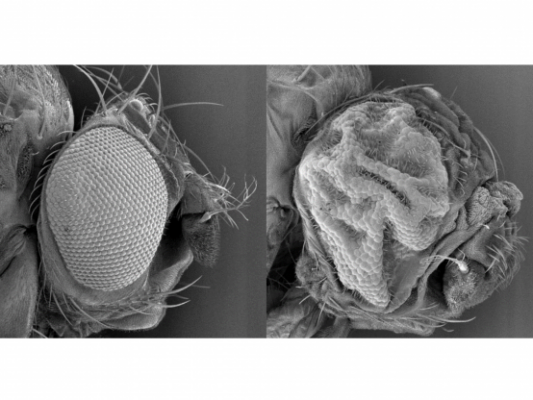What have flies ever done for us?
2 min read 27 March 2023
They might be known colloquially as the ‘fruit fly’ but the Drosophila fly is a very different breed to the agricultural pest.

The Drosophila fly is used to help us understand many human diseases and has already facilitated an inordinate number of discoveries from heredity, body patterning, circadian rhythms, innate immunity, and cancer signalling pathways.
“The formation of the Australian Drosophila Transgenic Facility will enable researchers to genetically modify the fruit fly and remove specific genes, or overexpress genes allowing us to study human diseases,” said Professor Kieran Harvey, Group Leader of the Organogenesis and Cancer Program at Peter Mac.
“Drosophila is a particularly good model to study human diseases because seventy percent of human disease genes have a counterpart in the fly, and they are also much faster and cheaper to work with than other animal models.
“This facility will mean that any Australian researcher can manipulate the genome of Drosophila to answer fundamental research questions right here in Australia,” he said.
“Bringing this capacity and skill set to our shores reduces the cost and increases the speed of research. It also enhances a researcher’s ability to manipulate more genes, allowing a broader application of the fly model.”
Associate Professor Louise Cheng and Professor Harvey will co-lead the facility that is supported by Phenomics Australia and Peter Mac and will service researchers around Australia with their Drosophila transgenesis requirements.
Associate Professor Cheng said her team use Drosophila as a model organism to investigate several things including how tumours can grow at the expense of muscles and adipose tissue during cancer when the body wastes away.
“This new centre will save us from having to send our gene modification requirements to the USA and wait for the fly model to be returned.
“I am excited by the possibilities and increased research avenues this will open up for us,” she said.
Many of the key cancer signalling pathways were first discovered in Drosophila, such as Notch, Hedgehog and Hippo, along with key components of other pathways such as the RAS/MAP kinase pathway.
These discoveries have led to new therapies and avenues for treating cancer.
The humble Drosophila fly has been responsible for at least five Nobel prize winning discoveries and maybe the next one will come from research facilitated by the Australian Drosophila Transgenic Facility at Peter Mac.
If you would like to use the services of the Transgenic Fly Lab please reach out to
